KARNAK
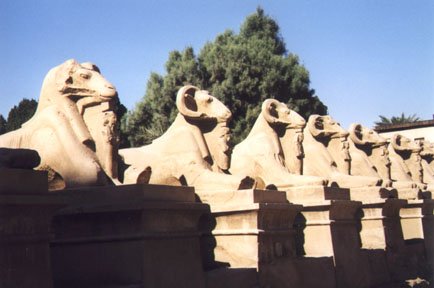
Karnak is a large temple complex a short drive away from the Luxor Temple. The two
sites were actually linked by a long pathway, which had a row of ram-headed sphinxes on
both sides of it. A portion of the sphinx lineup can still be seen at both ends, though
the road itself is gone from the middle. The sphinxes at Karnak were relatively intact,
unlike the Luxor ones. It was at Karnak that we returned in the evening to watch a sound
and light show (where the different buildings are lit by colored lights while you listen
to a dramatic audio presentation, as you sit in bleachers off to one side of the massive
complex).
Karnak was a huge site, probably the largest that we went to. You could
spend all day there and probably still not see it all. This photo (with the sacred lake in
the foreground) only shows a portion of the site. You have to see an aerial photo to
appreciate its size and layout.
This is a portion of the Great Temple of Amun at Karnak.
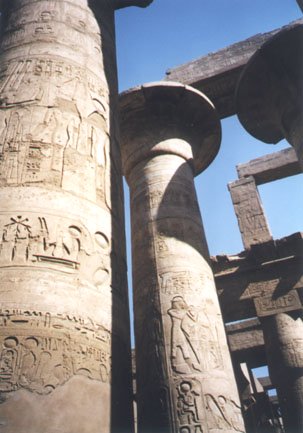
These columns are part of the hypostyle hall at Karnak, which is considered to be
one of the finest examples of Egyptian architecture. The 134 columns are massive in width
and height (23 meters in height, 15 meters in circumference at the top of the open papyrus
capitals). While it was not uncommon to have columns covered by religious carvings such as
these, the ones in this area of Karnak were interesting in that the inscriptions had been
carved doubly deep (under the orders of Ramesses II), to prevent later rulers from
re-carving the columns with their own stories.
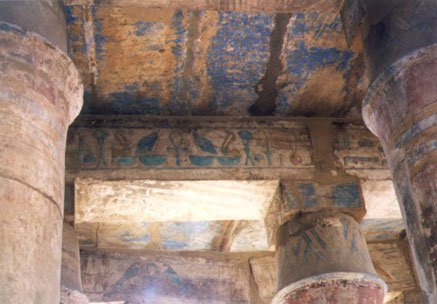
One part of the hypostyle hall still retains some of the color on its murals,
which much have been brilliantly colored when they were new. Note the ceiling that is
covered in blue paint, with regularly spaced stars portraying the heavens above.
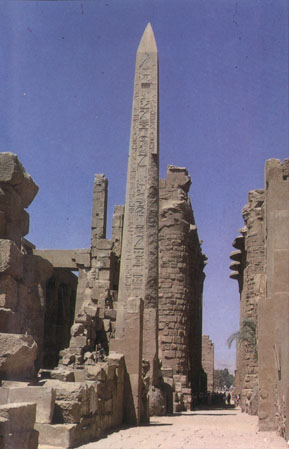
Karnak is one of the few sites that still has a massive stone obelisk reaching up
into the sky. This is the obelisk of Queen Hapshetsut, which, while damaged, is still
standing. It is covered with heiroglyphics, and is a fitting legacy for Egypt's only
female pharoah.
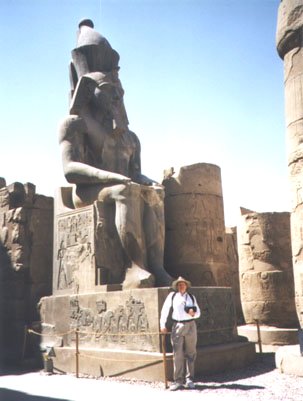
I'm standing here so you can get an idea just how big this statue of Ramesses II
really is. Like many of the large things in Egypt, you have to see a person next to it to
appreciate its size. By the way, it's carved out of one large piece of stone.